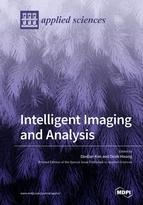Intelligent Imaging and Analysis
A special issue of Applied Sciences (ISSN 2076-3417). This special issue belongs to the section "Mechanical Engineering".
Deadline for manuscript submissions: closed (31 March 2019) | Viewed by 139056
Special Issue Editors
Interests: biologically inspired robotics; mobile robots; biosensors; neural networks; evolutionary computation
Special Issues, Collections and Topics in MDPI journals
Special Issue Information
Dear Colleagues,
Imaging and analysis is widely involved with various research fields, including biomedical applications, medical imaging and diagnosis, computer vision, autonomous driving and robot controls. Imaging and analysis are now facing a big intelligent change due to the breakthroughs of artificial intelligence techniques, including deep learning. Many difficulties in image generation, reconstruction, de-noising skills, artifact removal, segmentation, detection, and control tasks are being overcome with the help of advanced artificial intelligence approaches.
This Special Issue focuses on the latest developments of learning-based intelligent imaging techniques and subsequent analyses, which include photographic imaging, medical imaging, detection, segmentation, medical diagnosis, computer vision and vision-based robot control. These latest technological developments will be shared through this Special Issue for various researchers who are involved with imaging itself, or using image data and analysis for their own specific purposes. New types of applications utilizing intelligent imaging and analysis techniques are also welcome.
Potential topics include, but are not limited to:
- Photographic imaging
- Medical imaging
- Magnetic resonance imaging
- Computed tomography
- Image reconstruction
- Image detection
- Segmentation
- Diagnosis
- De-noising
- Artifact removal
- Computer vision
- Vision-based robots
Prof. DaeEun Kim
Prof. Dosik Hwang
Guest Editors
Manuscript Submission Information
Manuscripts should be submitted online at www.mdpi.com by registering and logging in to this website. Once you are registered, click here to go to the submission form. Manuscripts can be submitted until the deadline. All submissions that pass pre-check are peer-reviewed. Accepted papers will be published continuously in the journal (as soon as accepted) and will be listed together on the special issue website. Research articles, review articles as well as short communications are invited. For planned papers, a title and short abstract (about 100 words) can be sent to the Editorial Office for announcement on this website.
Submitted manuscripts should not have been published previously, nor be under consideration for publication elsewhere (except conference proceedings papers). All manuscripts are thoroughly refereed through a single-blind peer-review process. A guide for authors and other relevant information for submission of manuscripts is available on the Instructions for Authors page. Applied Sciences is an international peer-reviewed open access semimonthly journal published by MDPI.
Please visit the Instructions for Authors page before submitting a manuscript. The Article Processing Charge (APC) for publication in this open access journal is 2400 CHF (Swiss Francs). Submitted papers should be well formatted and use good English. Authors may use MDPI's English editing service prior to publication or during author revisions.
Keywords
- Artificial intelligence
- Deep learning
- Photographic imaging
- Medical imaging
- Magnetic resonance imaging
- Computed tomography
- Image reconstruction
- Detection
- Segmentation
- Diagnosis
- Denoising
- Artifact removal
- Computer vision
- Robot control






